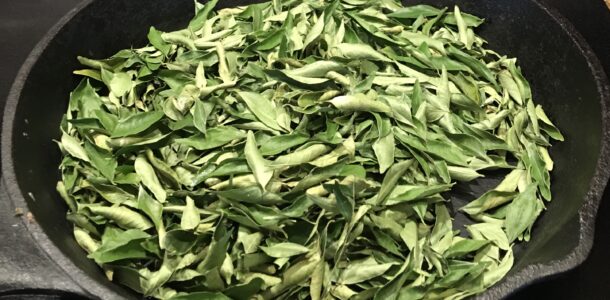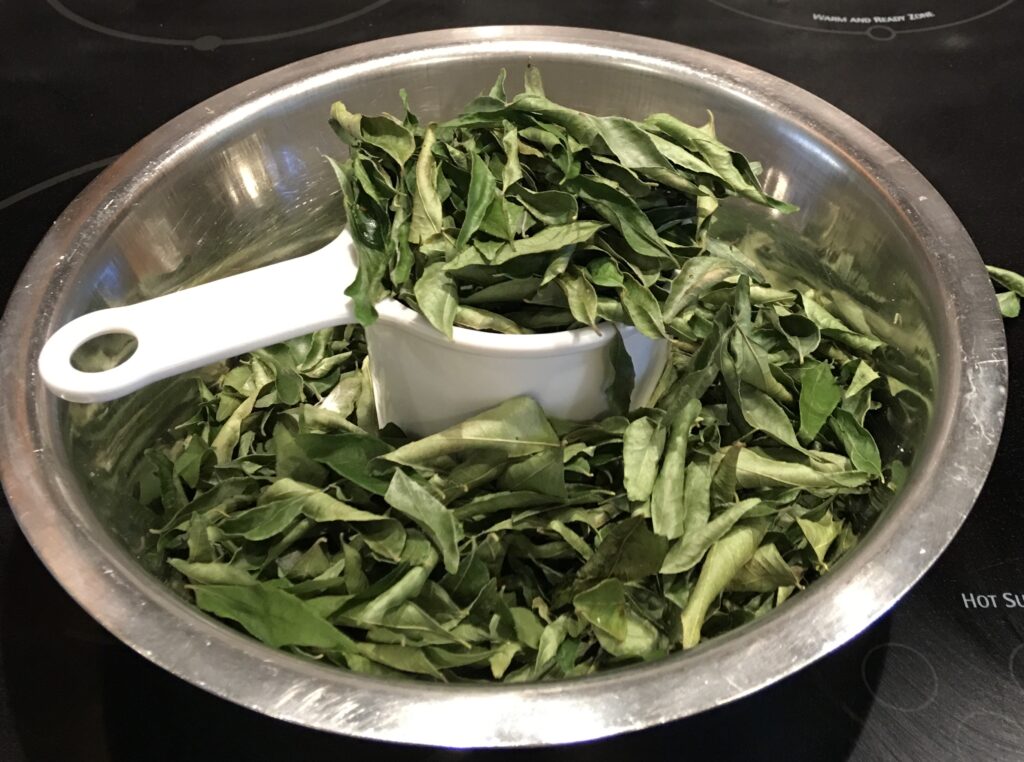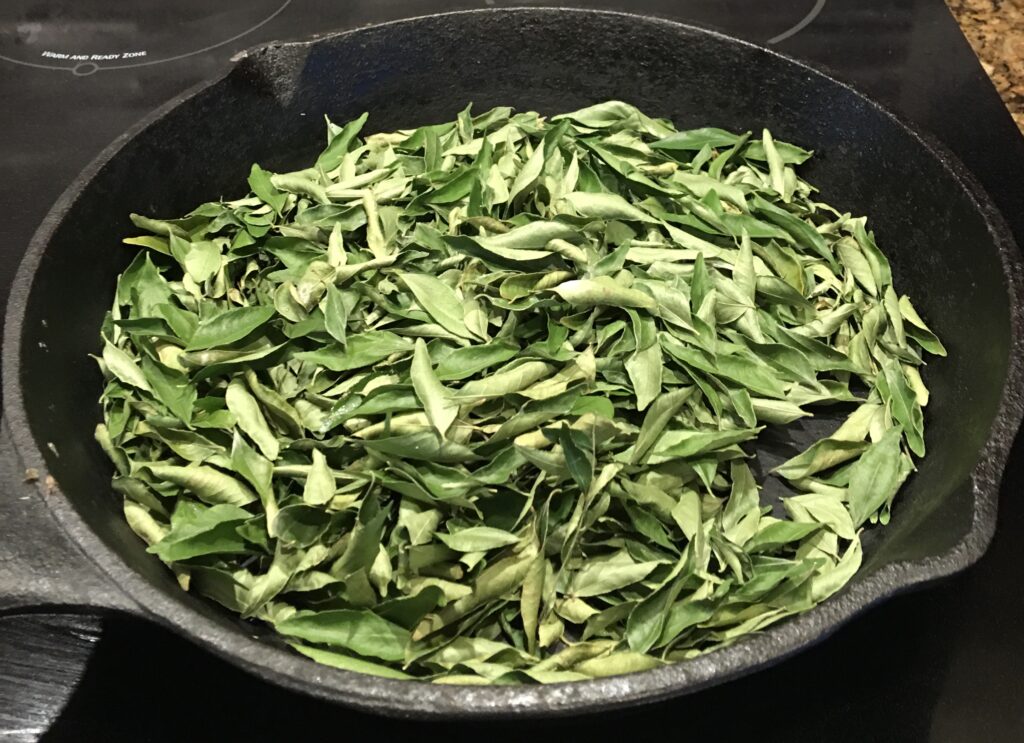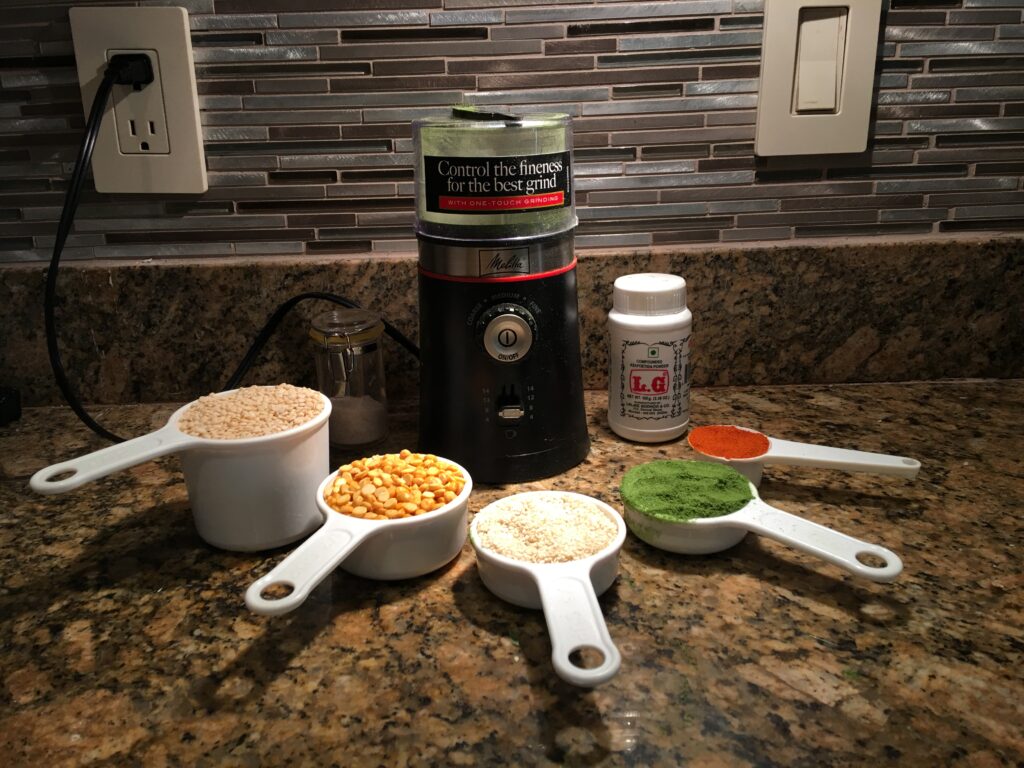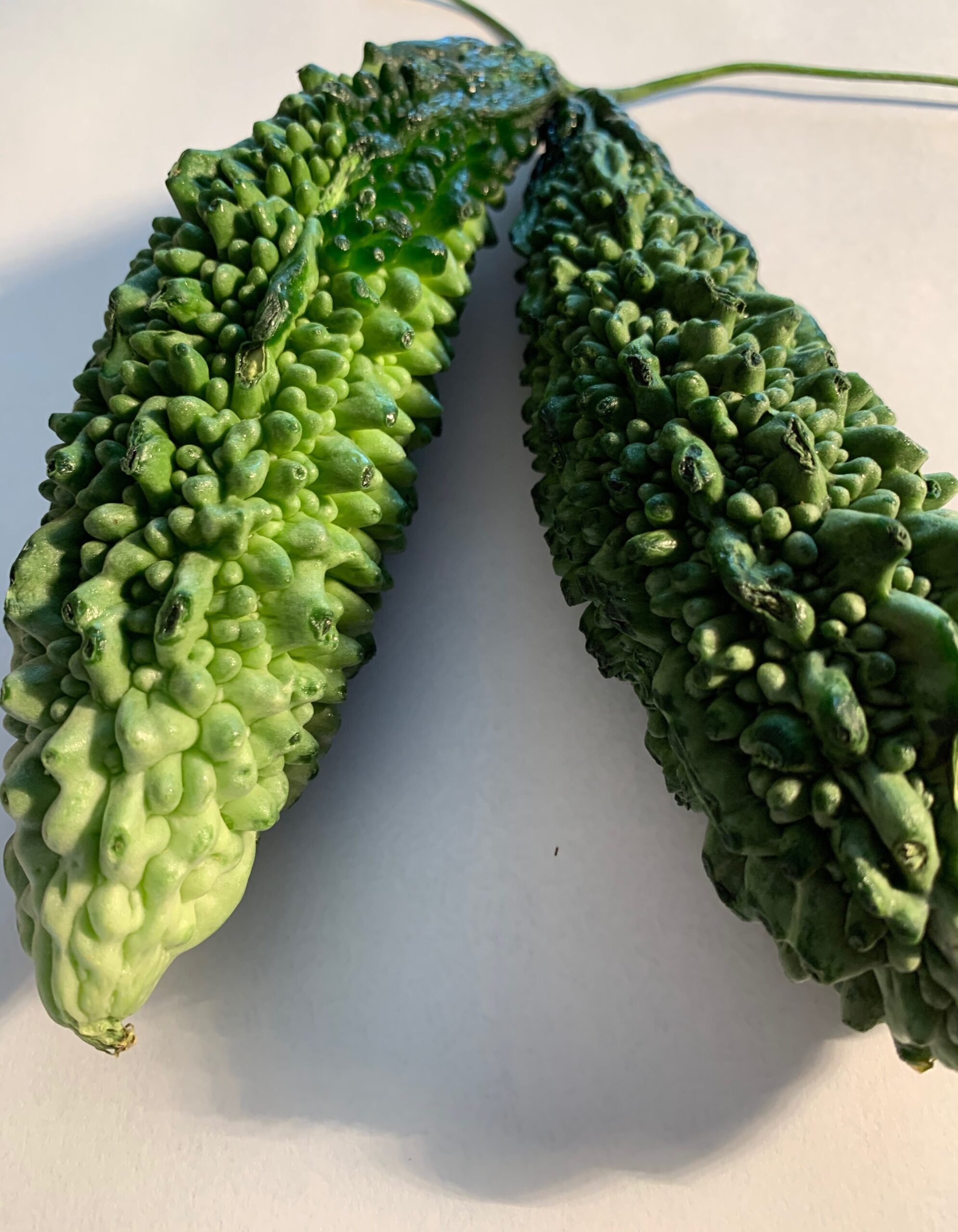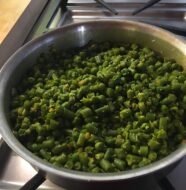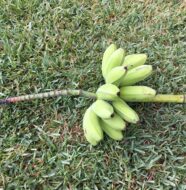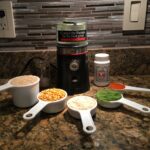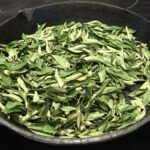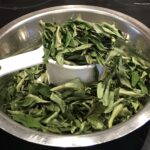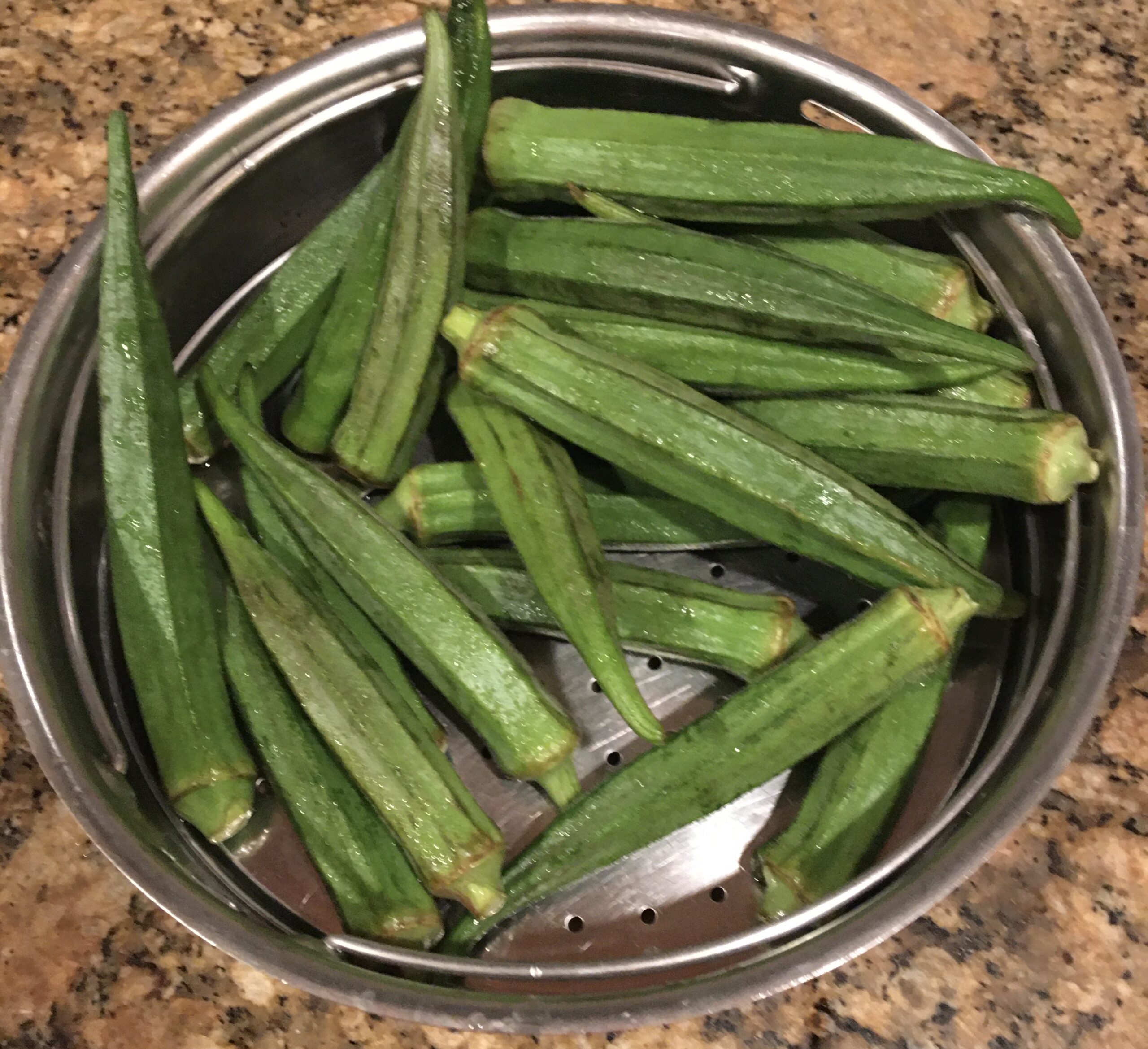Curry leaf ( Scientific name – Murraya Konegii from the family Rutaceae along with rue, citrus, and satinwood ) is a tropical /subtropical tree 12-20 feet tall and native to India ad SriLanka. The species name commemorates the botanist Johann Konig. The genus Murray commemorates Swedish physician and Botanist Andreas Murray.
Compounds found in curry leaves, stems, bark, and seeds contain Cinnamaldehyde and numerous carbazole alkaloids including Mahanimbine and Girinimbine.
Curry leaves can be sundried, fried in oil, or used fresh. Choose leaves with an even green color to make the dry chutney. The lentils and sesame seeds provide some protein and nutrients. The powder can be mixed in some oil and eaten with Idlis or Dosais.
Growing Curry leaves:Curry leaf plant is frost tender, but it can be grown indoors. Plant the tree in a well-drained area, pot with good potting soil mix and place it in a sunny area. Feed it weekly with a dilute solution of seaweed fertilizer and trim the leaves as needed. Watch the plant for mites and scale.
https://www.gardeningknowhow.com/edible/herbs/curry/growing-curry-leaf.htm
History : Curry leaves are seen in the early 1st -4th century AD. In Tamil and Kannada literatur. The name was updated as the word Kari with its uses. The word now popularly used for Murraya Koeiegii is curry leaf which originated from the Tamil word Kari which means spiced sauce. The usage of curry leaves spread from India to Srilanka, South Africa, and Malaysia. British merchants invented curry powder in the late 18th century.
Nutrition Facts of Curry Leaves
(Murraya Konegii)100g raw
| Energy 108 k cal | Calcium 830 mg | Folic acid free 23.5 mcg |
| Carb 18.7 g | Phosphorous 57 mg | Folic acid total 93.9 mcg |
| Water 63.8 g | Iron 0.93 mg | Thiamin 0.08mg |
| Fiber 6.4g | Copper 0.1 mg | Carotene 7560 mcg |
| Protein 6.1 g | Chromium 0.006 mg | Riboflavin 0.21 mg |
| Fat 1 g | Magnesium 44mg | Niacin 2.3mg |
| Zinc 0.12 mg | Manganese 0.15 mg | Vitamin C 4 mg |
Health Benefits of Curry Leaves
- Curry leaves possess anti-diabetic properties: anti-hyperglycemic properties of the curry leaves were beneficial in controlling the blood glucose levels in diabetic rats as per research conducted at the University of Chennai.
- Curry Leaves have antioxidant properties with various vitamins A, B, C & E; they help in reducing oxidative stress and free radical scavenging activity.
- Curry Leaves boost hair growth: Curry leaves are an excellent source of nutrients for hair growth. Regular consumption strengthens hair, cures dandruff, and prevents premature graying of hair.
- Curry Leaves may fight cancer: chemical constituents like phenols in curry leaves are helpful in fighting cancers such as Leukemia, Prostate, and Colo-rectal cancers.
- Curry Leaves can cure diarrhea: Carbazole alkaloids present in curry leaves have anti-diarrheal properties.The leaves are heated with yogurt and turmeric for a few minutes and the drink is used as a home remedy.
- Curry leaves are beneficial for the eyes: Being rich in Vitamin A, curry leaves can protect the eyes, keep the retina healthy, prevent cataract & vision loss.
- Curry Leaves provide gastrointestinal protection: Curry leaves are recommended as a cure for gastrointestinal issues. They possess mild laxative properties. Mixing buttermilk with curry leaves paste is found to be effective in curing diarrhea or with lime juice for indigestion.
- Curry Leaves act to lower cholesterol: curry leaves have the potential to reduce LDL levels with antioxidants that keep the heart-healthy.
- reference https://madhavuniversity.edu.in/curry-leaves.html
Spice Power
- Urad lentils are rich in fiber, boost energy, improve bone health, good for skin and hair; help manage diabetes, protect the heart, and strengthen the nervous system.
- Chickpea lentils have a low GI & GL and resistant starch which digests slowly. They have a soluble fiber called raffinose, a type of oligosaccharide that is fermented in the colon by good bacteria. They also contain a plant sterol called sitosterol similar to cholesterol that interferes with it thus helping to lower cholesterol.
- Sesame seeds are a high source of unsaturated fats, boost digestion, bone, skin, and dental health stabilizes blood pressure, have anti-aging properties, help fight stress and depression, and are a good source of energy.
- Red chili powder aids in weight loss, enhance cognitive function, fights inflammation and pain, promotes digestive health, relieves nasal congestion, helps the heart with capsaicin that can help reduce triglycerides, cholesterol, and platelet aggregation; help the body dissolve fibrin, which helps prevent the formation of blood clots.
- Asafetida powder: helps relieve bloating and other stomach problems, relieves asthma, menstrual pain, reduces acne and headaches, may help bring a glow in your face, & may lower blood pressure levels.
Method to make Curry Leaf Powder ( with Lentils)
- Dry roast the lentils and sesame seeds together in a skillet until they turn golden and the sesame seeds pop. Keep aside.
- Pluck curry leaves from stems and heat in the hot skillet.
- Allow cooling for 5 minutes; add dried curry leaves to the lentils.
- Grind lentil mixture to a powder using a dry grinder.
- Combine with salt, red chili powder, and asafoetida powder.
- Store in a container. It will last for a month or more.
TIPS
This curry Leaf powder can be eaten with Idli, Dosai or even mixed with rice
Dried curry leaves can also be used to make the powder
Store curry leaves in the fridge wrapped in a paper towel(lasts for a month)
Freeze curry leaves in a plastic bag /box(lasts for 6 months
Dried curry leaves can be powdered and stored for a year)
https://www.medindia.net/patients/lifestyleandwellness/curry-leaves-health-benefits.htm

